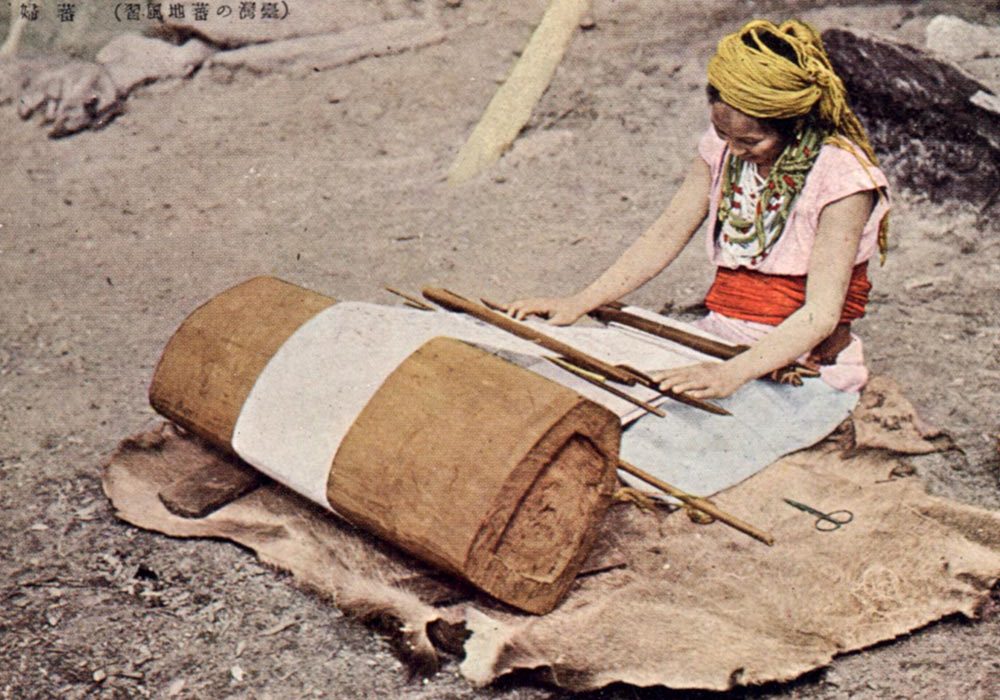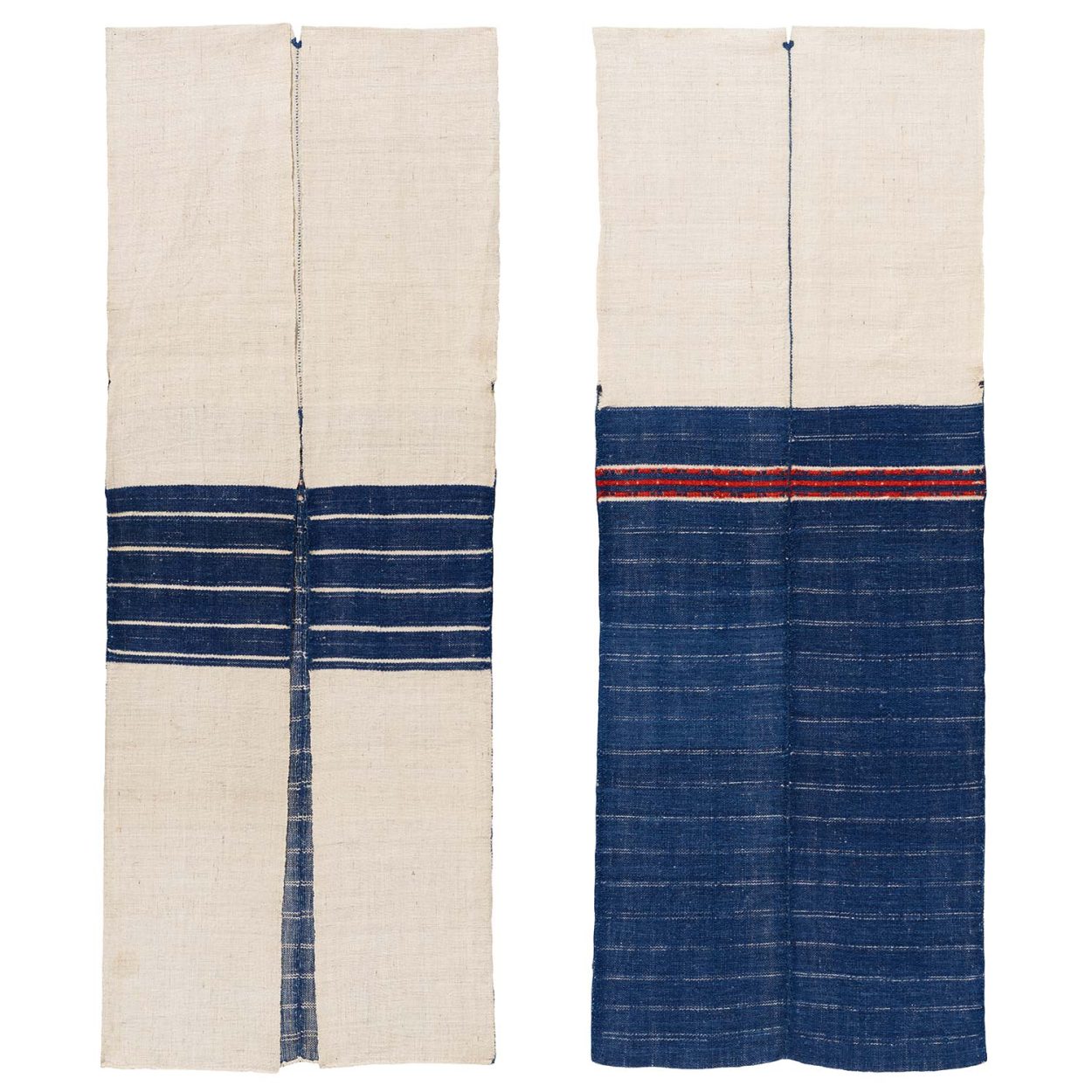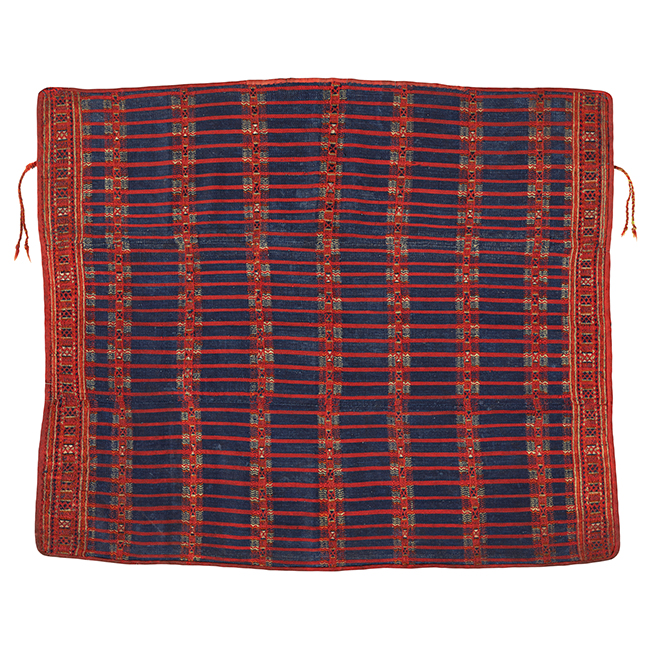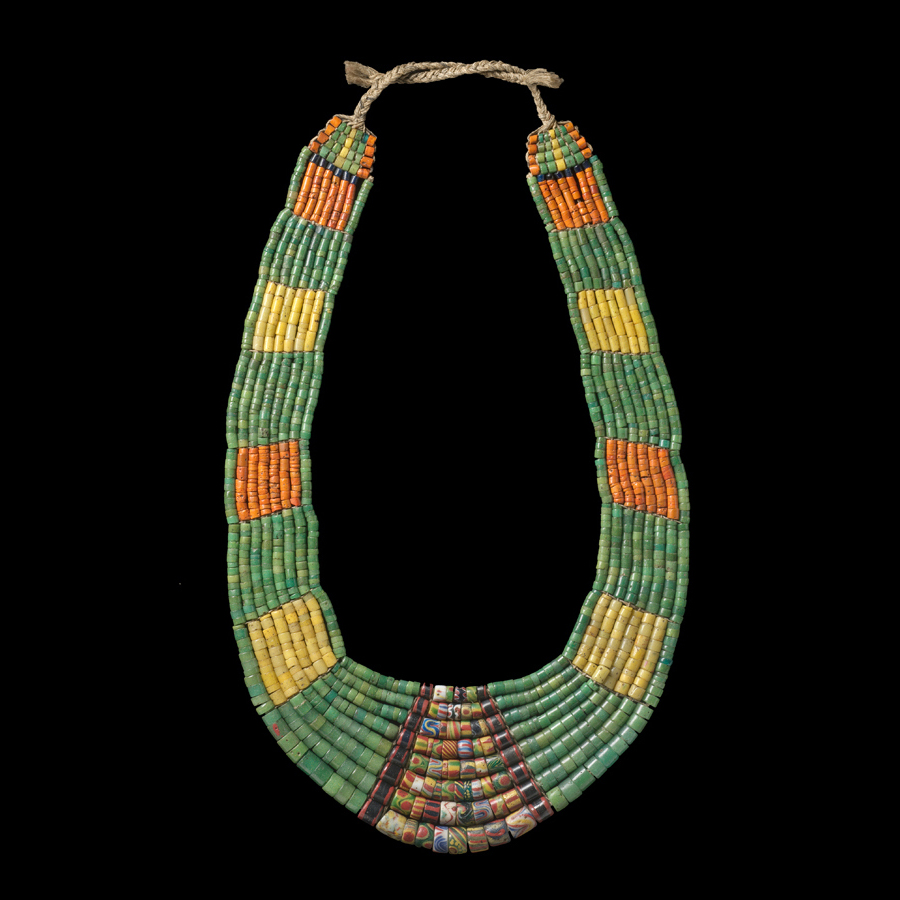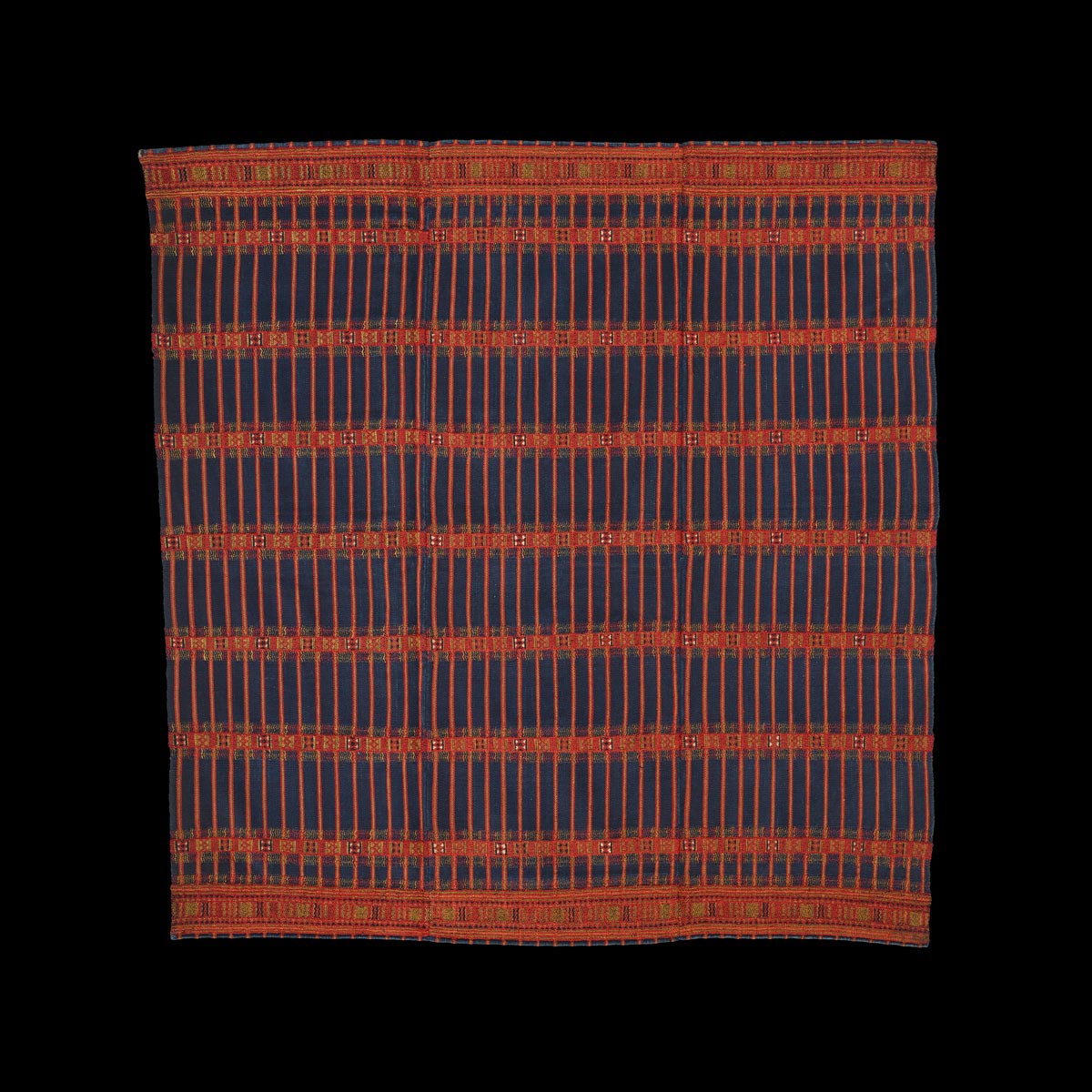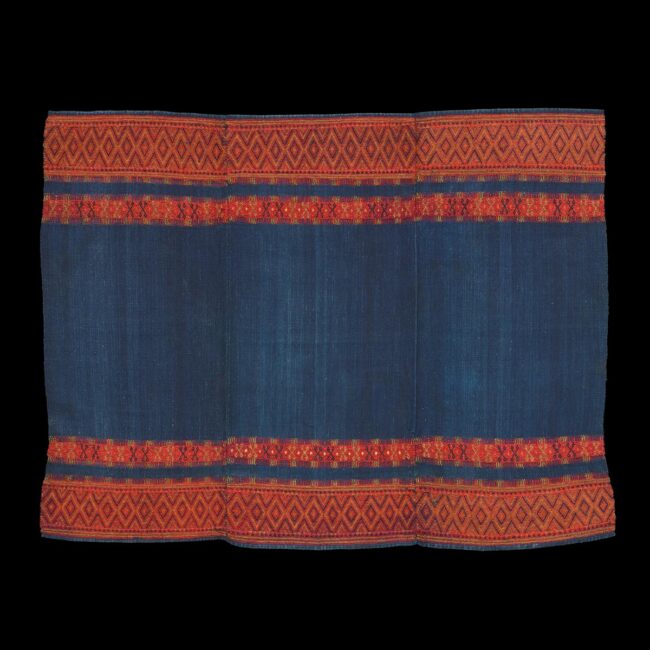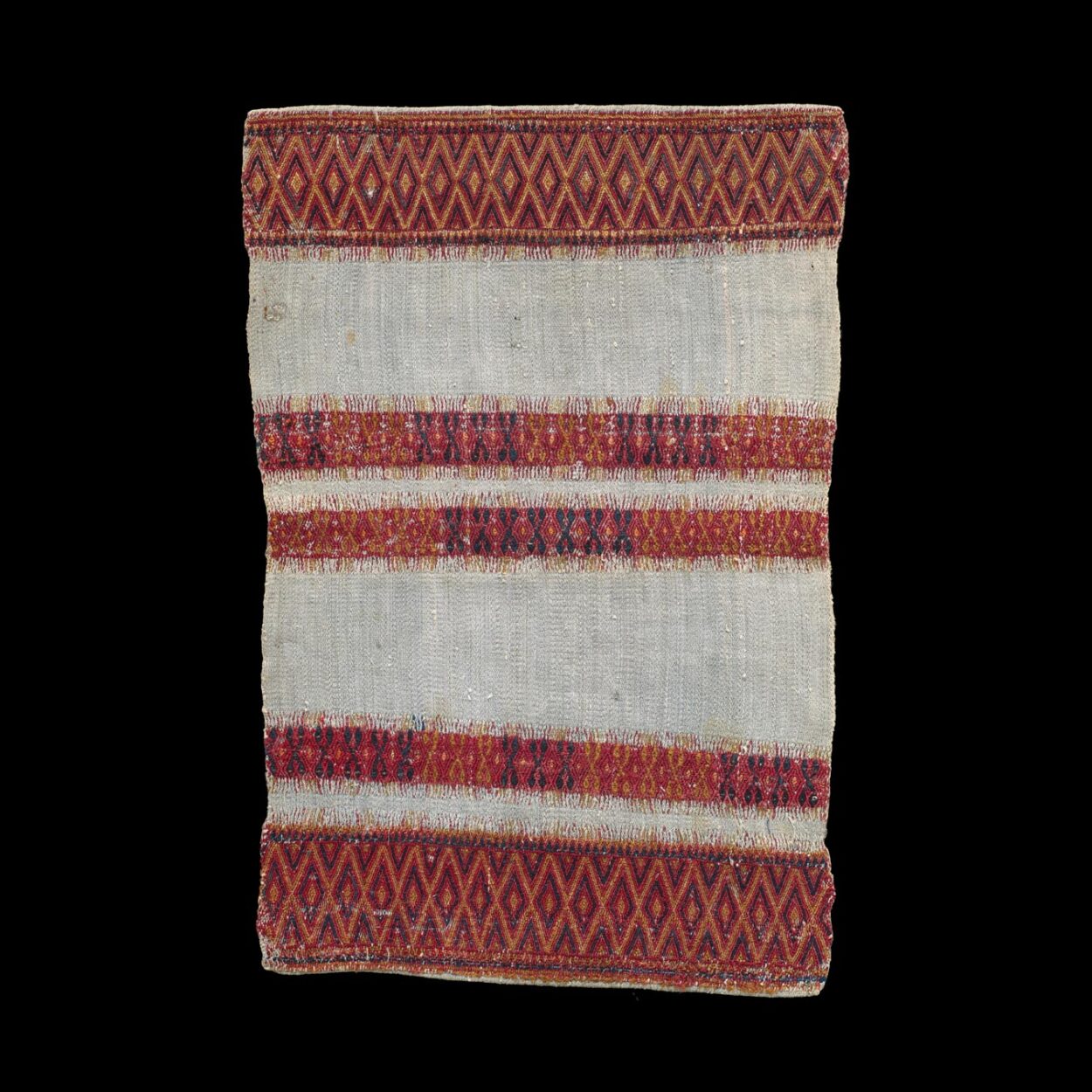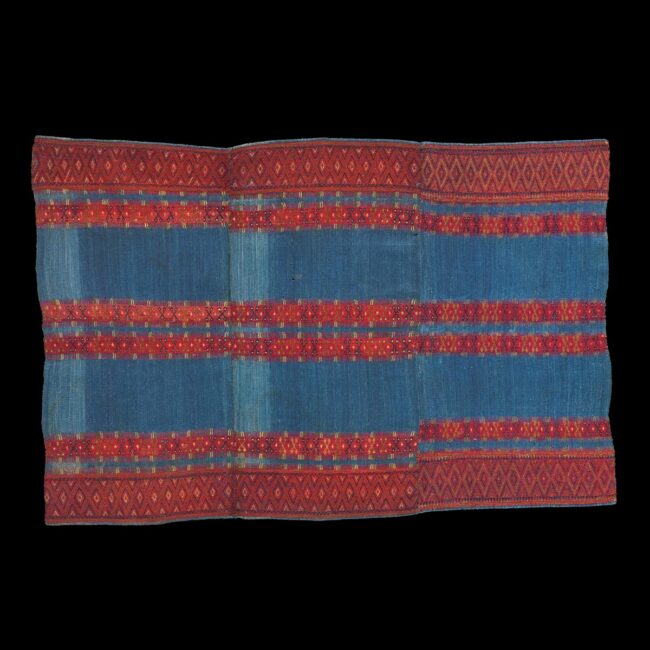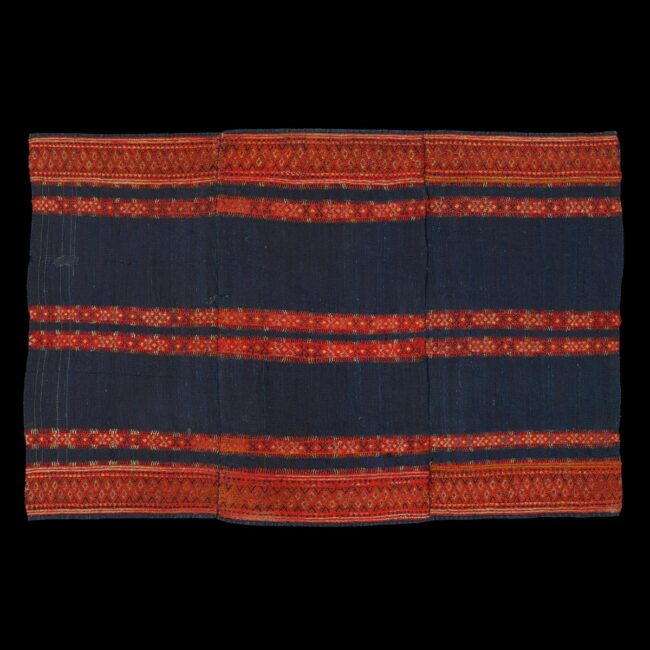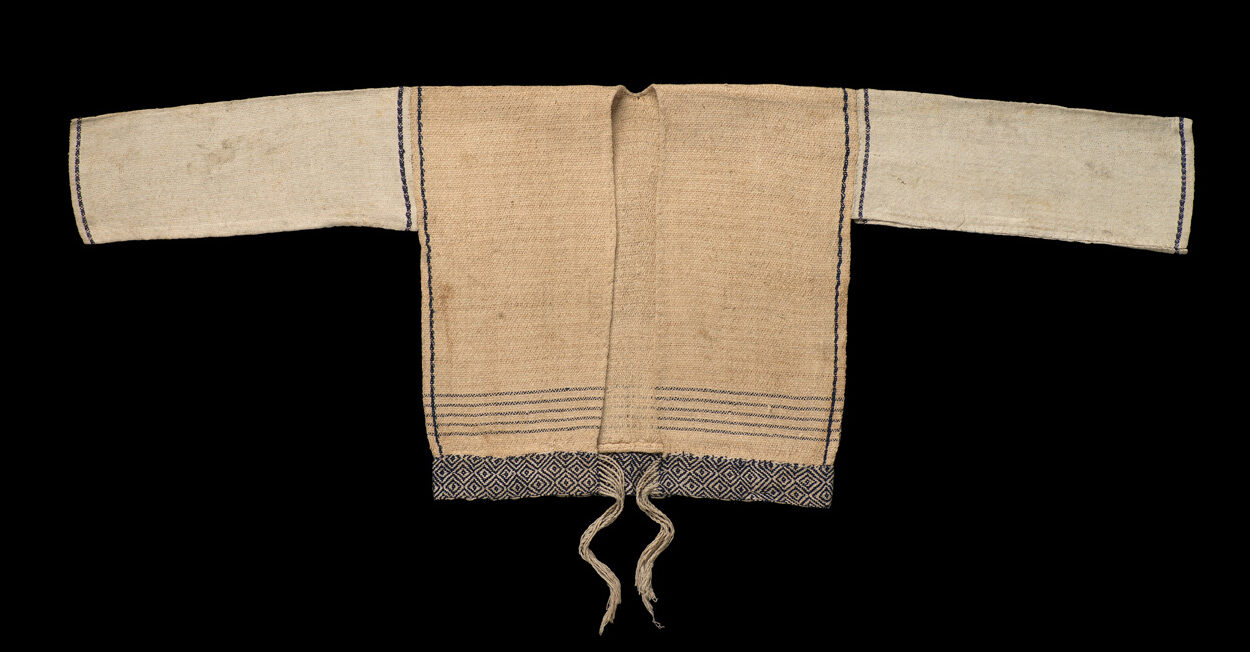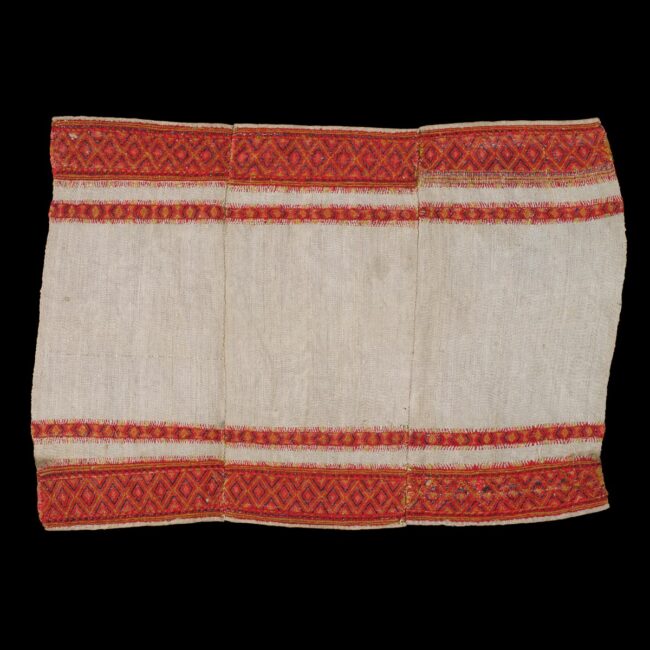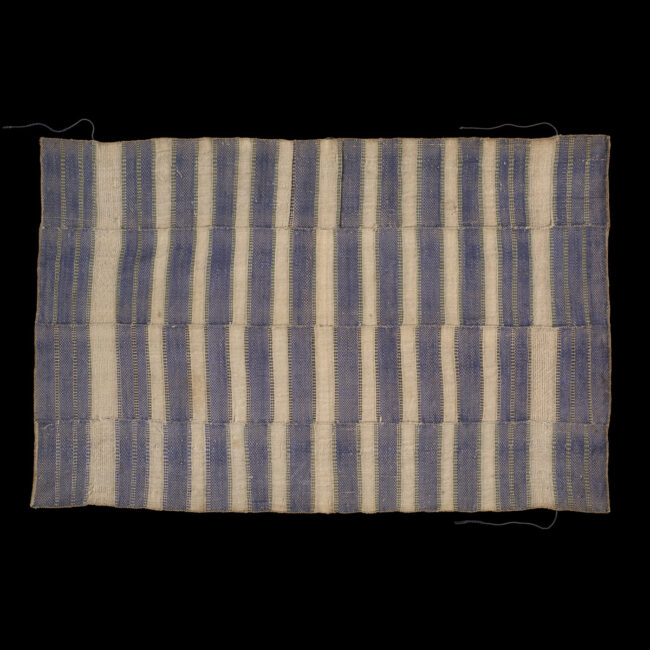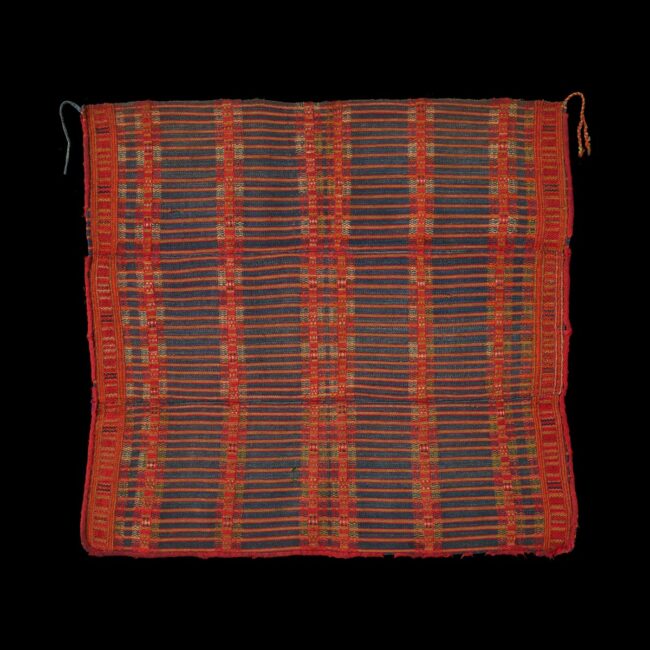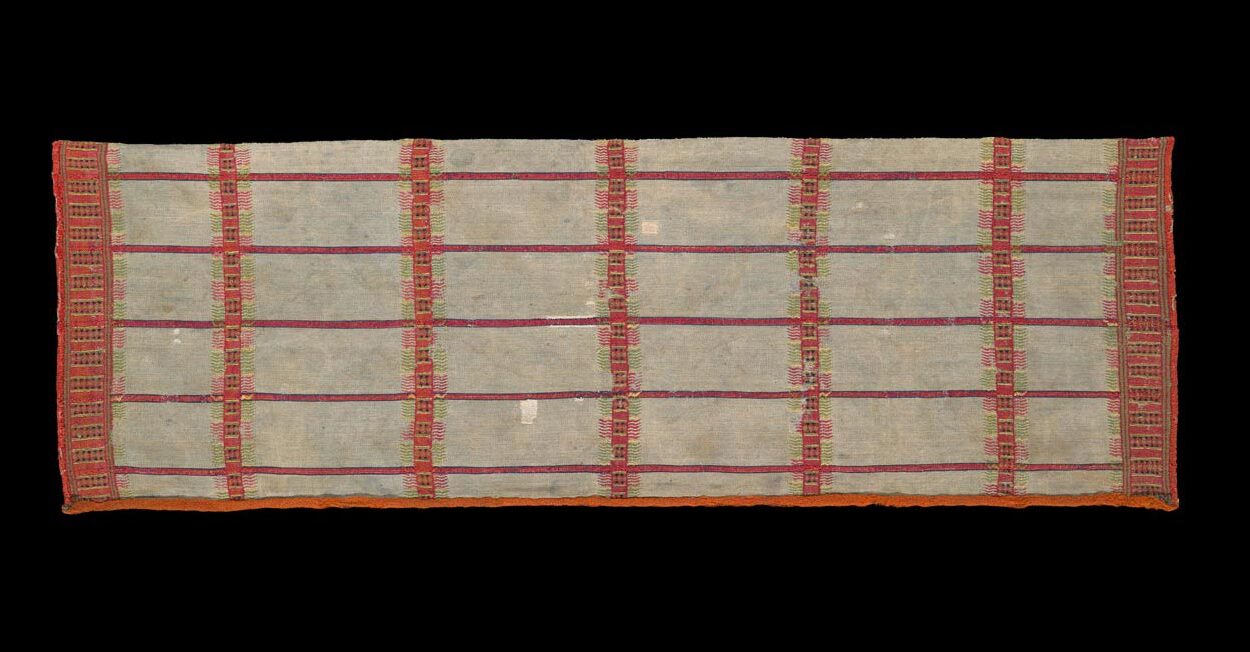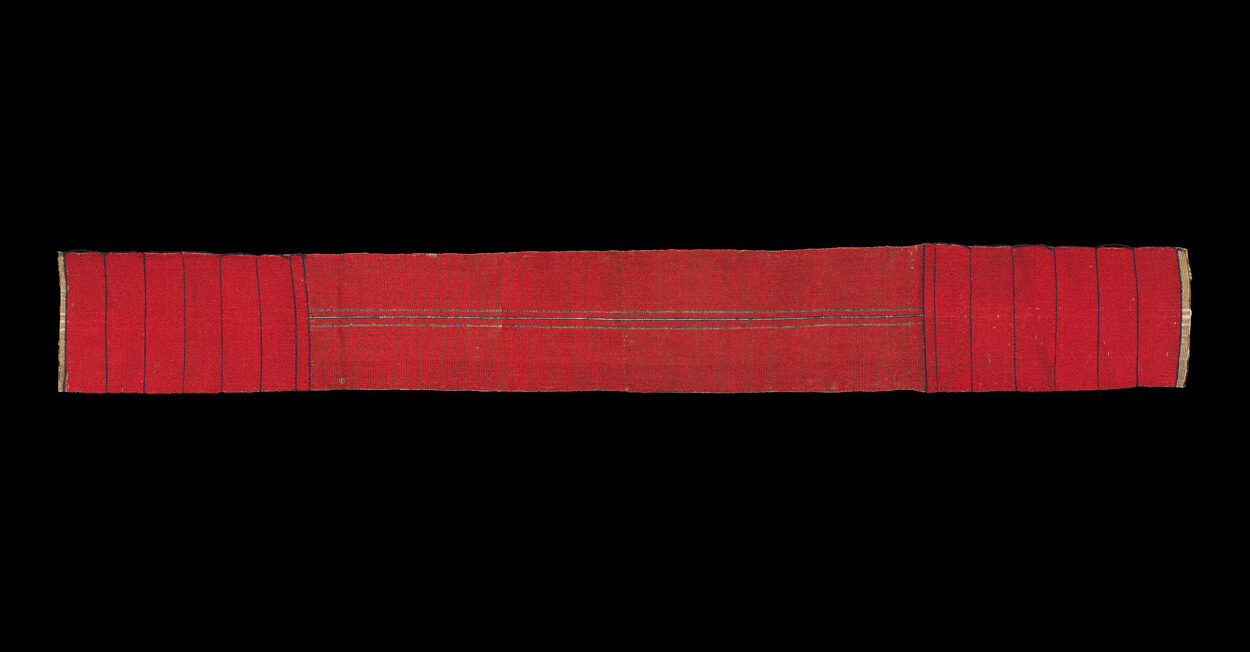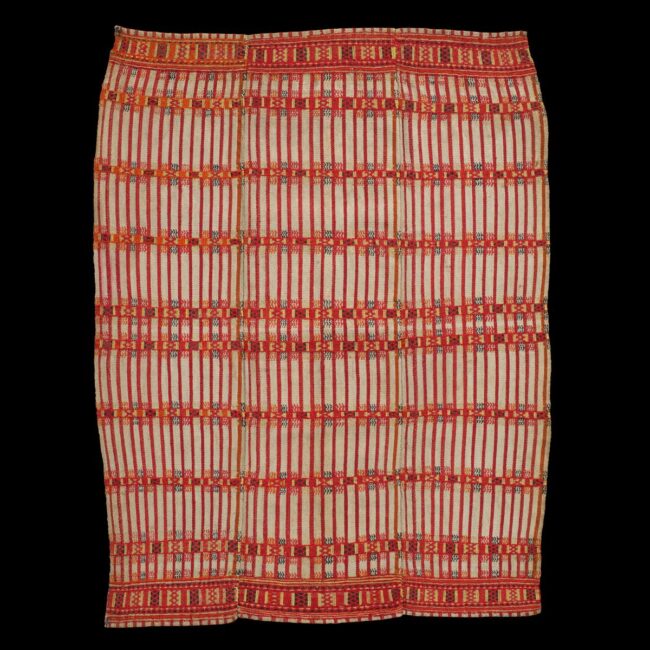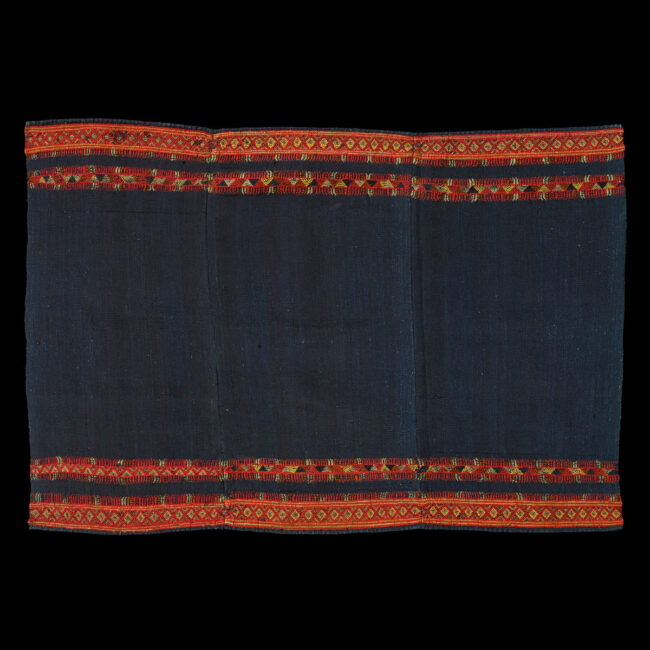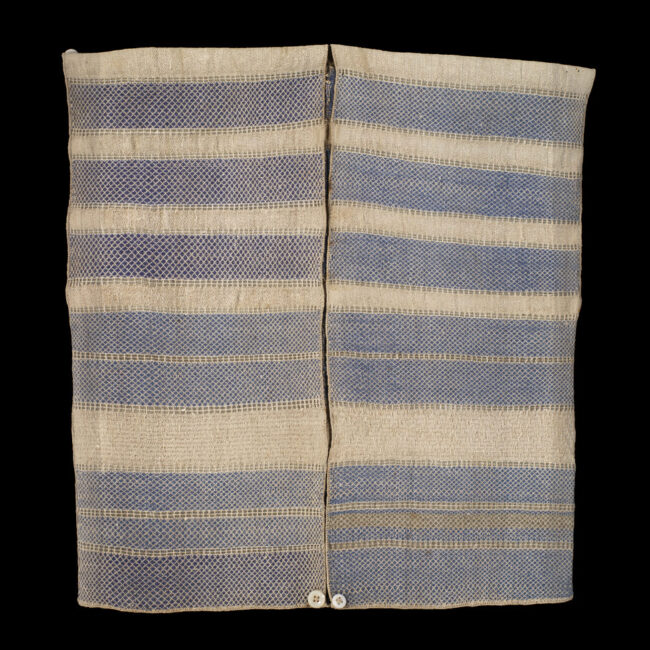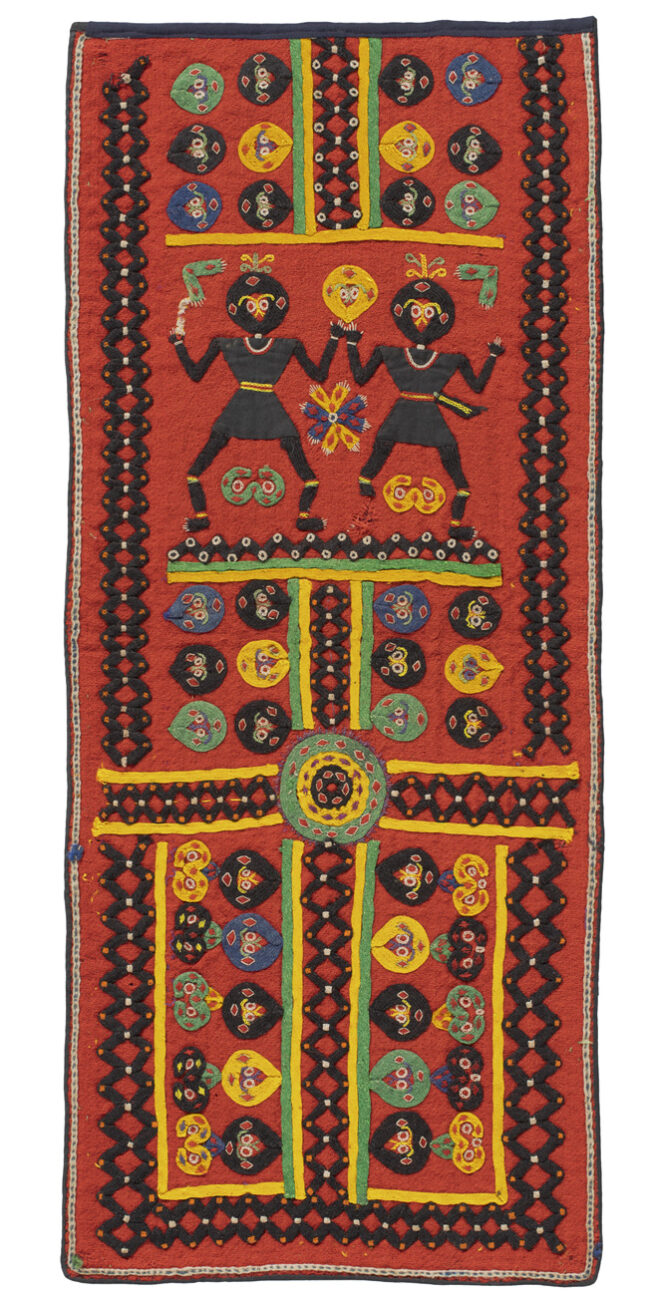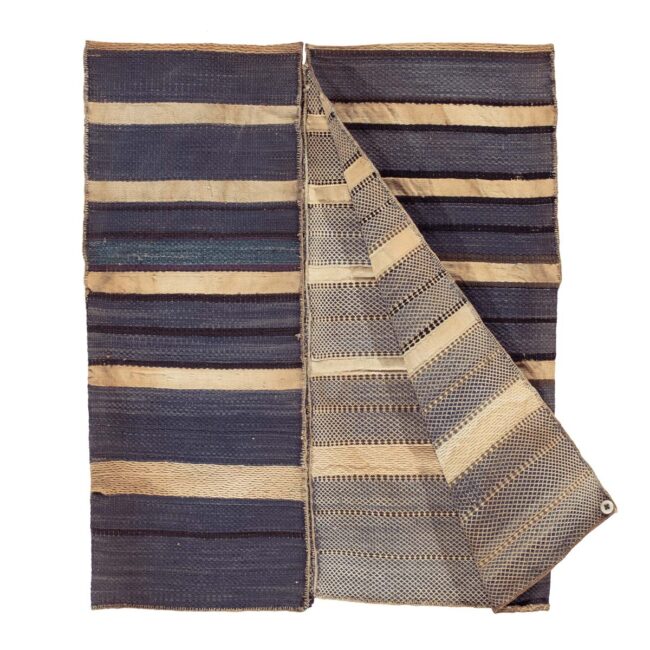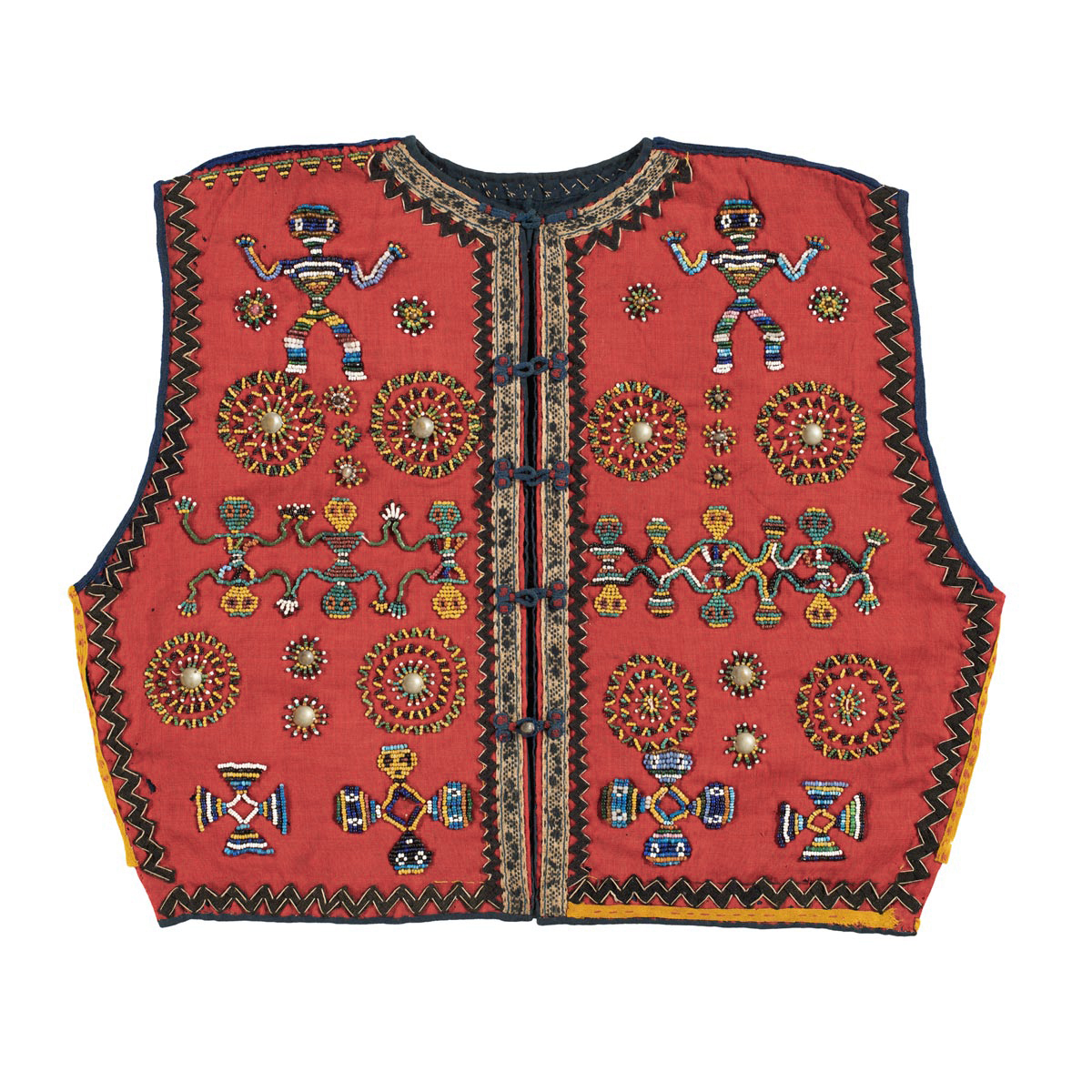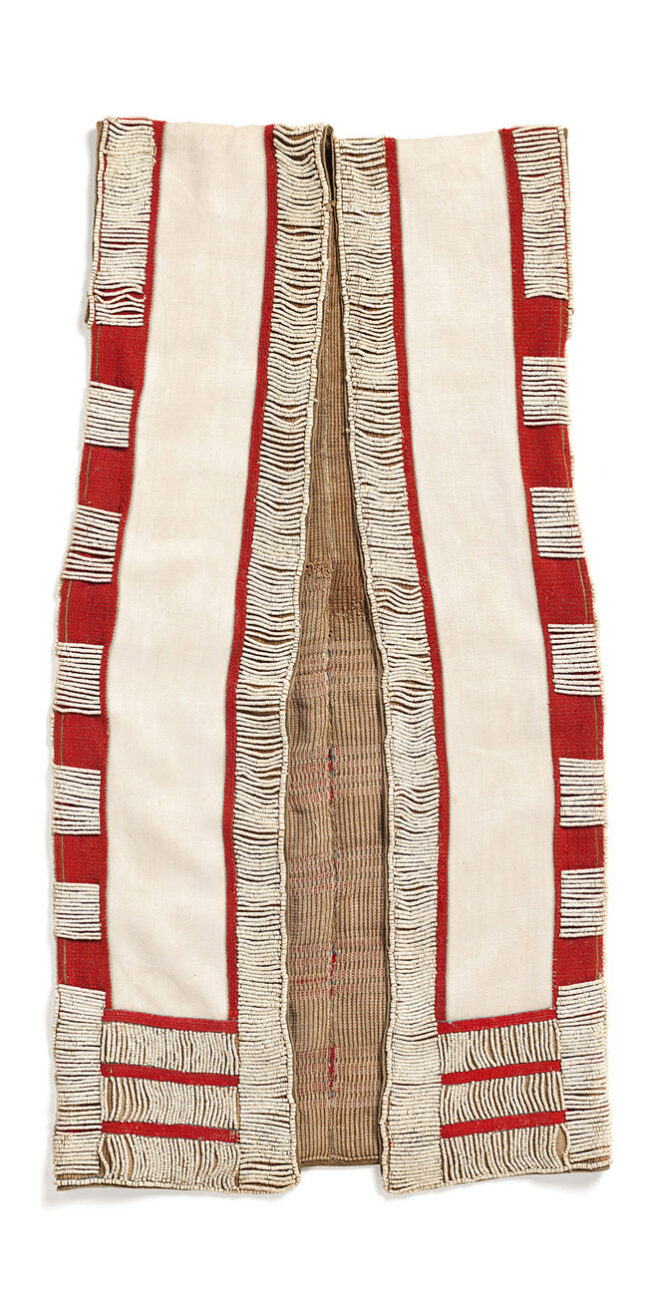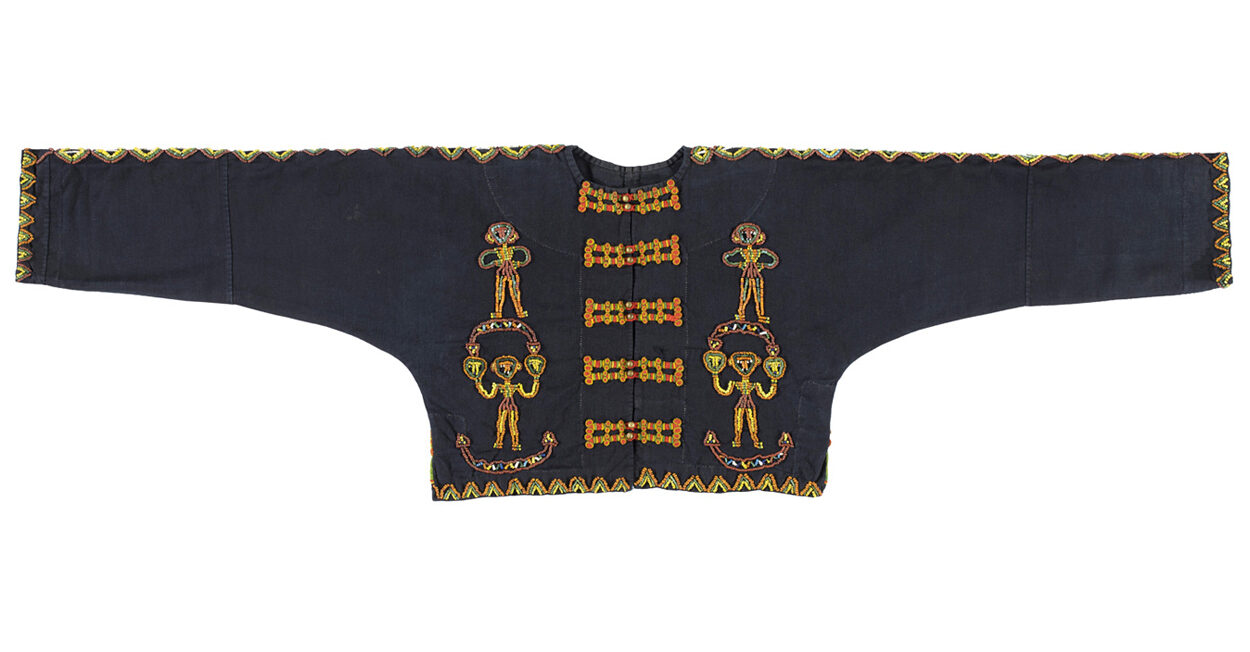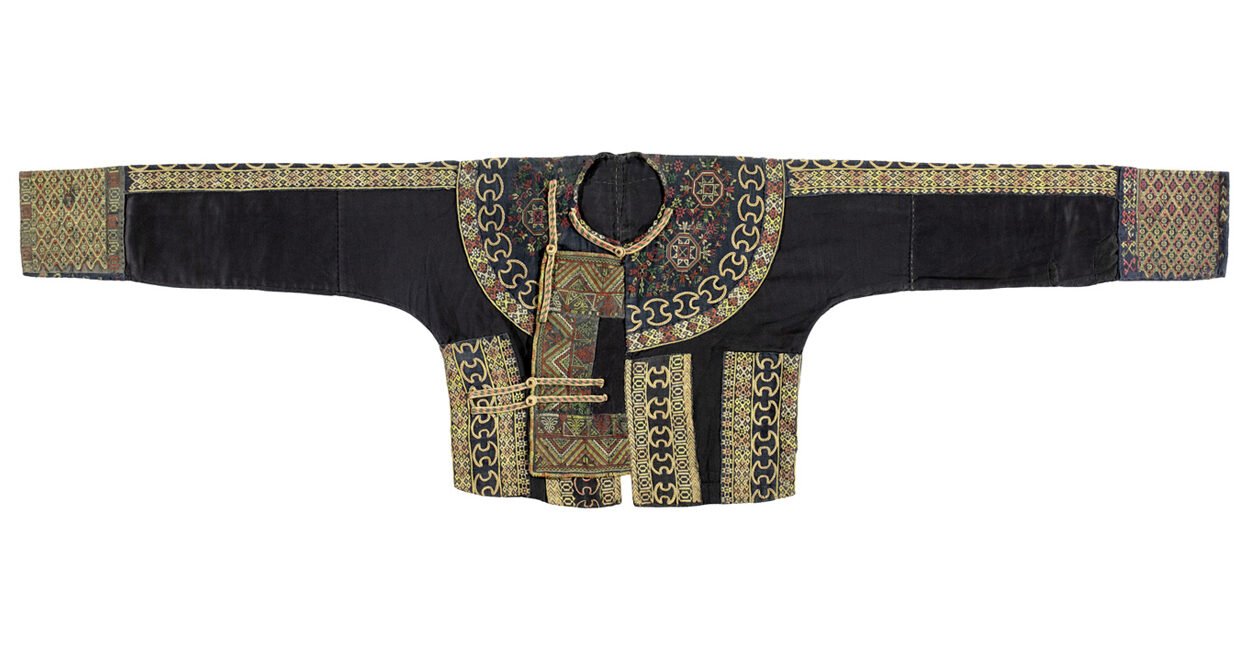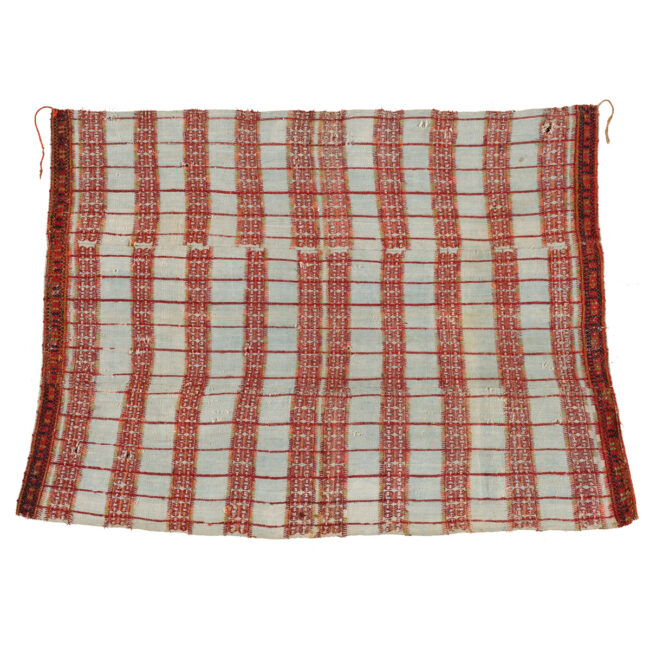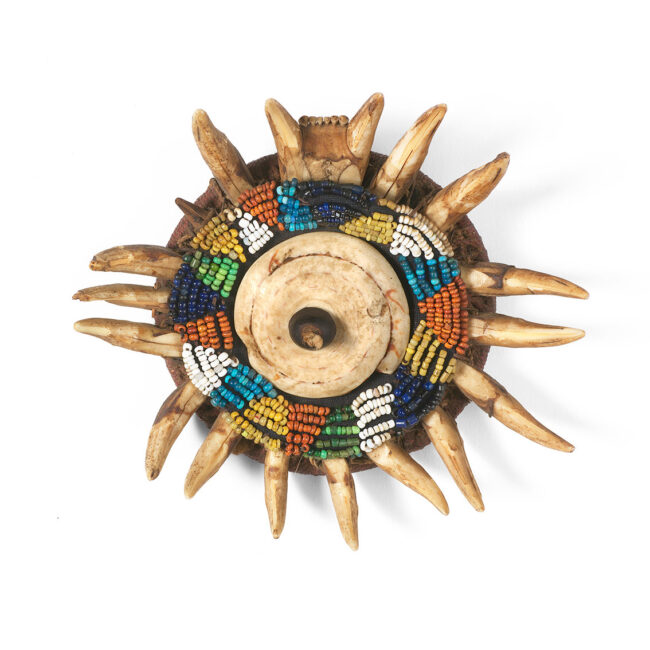Taiwan Aboriginal Garments – SOLD
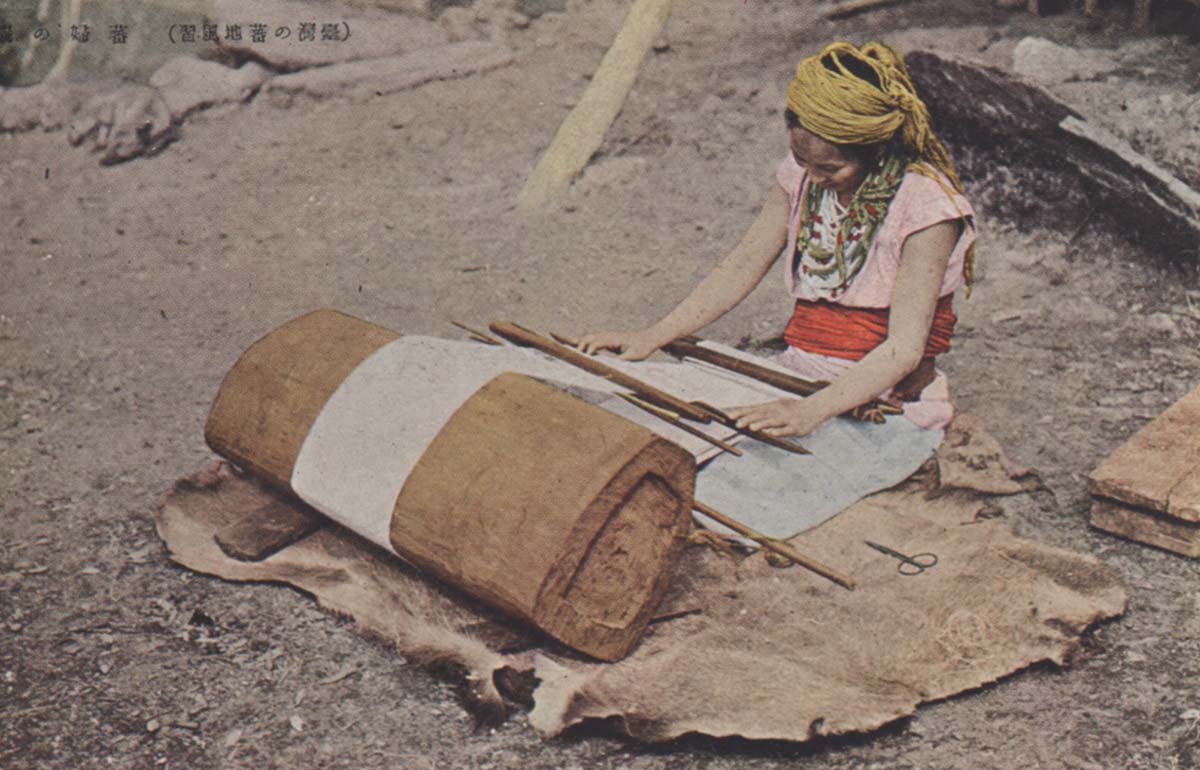
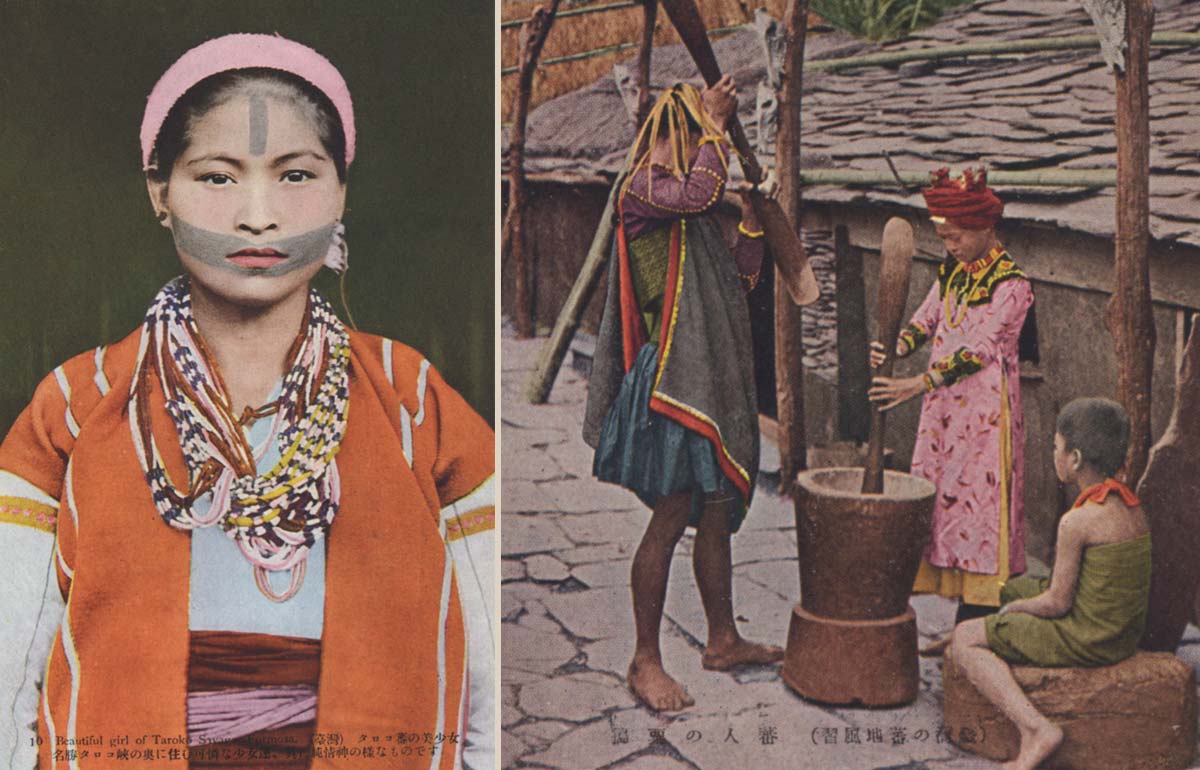
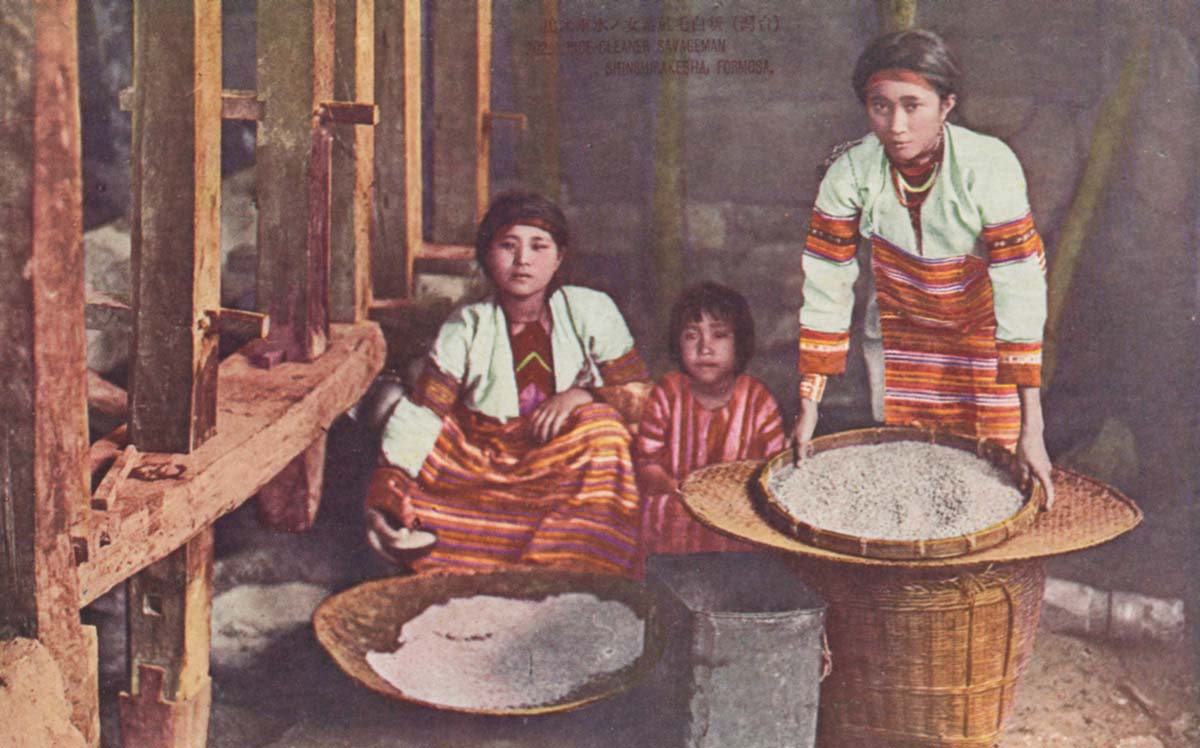
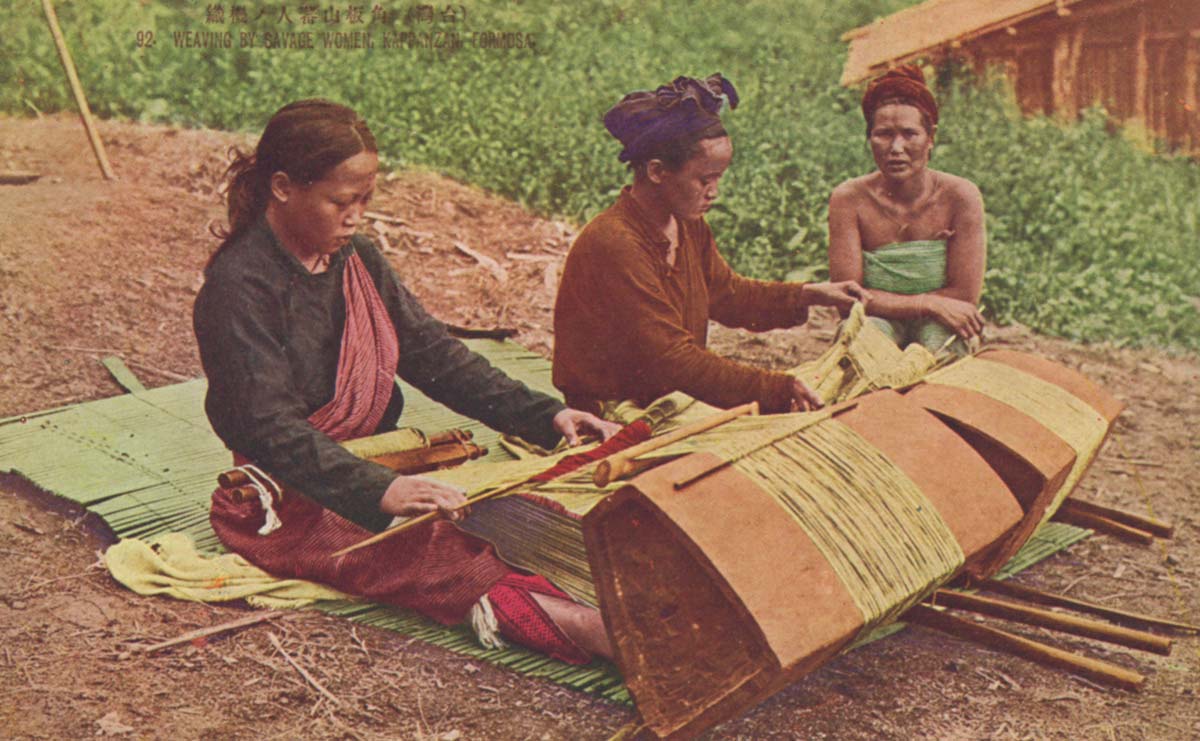
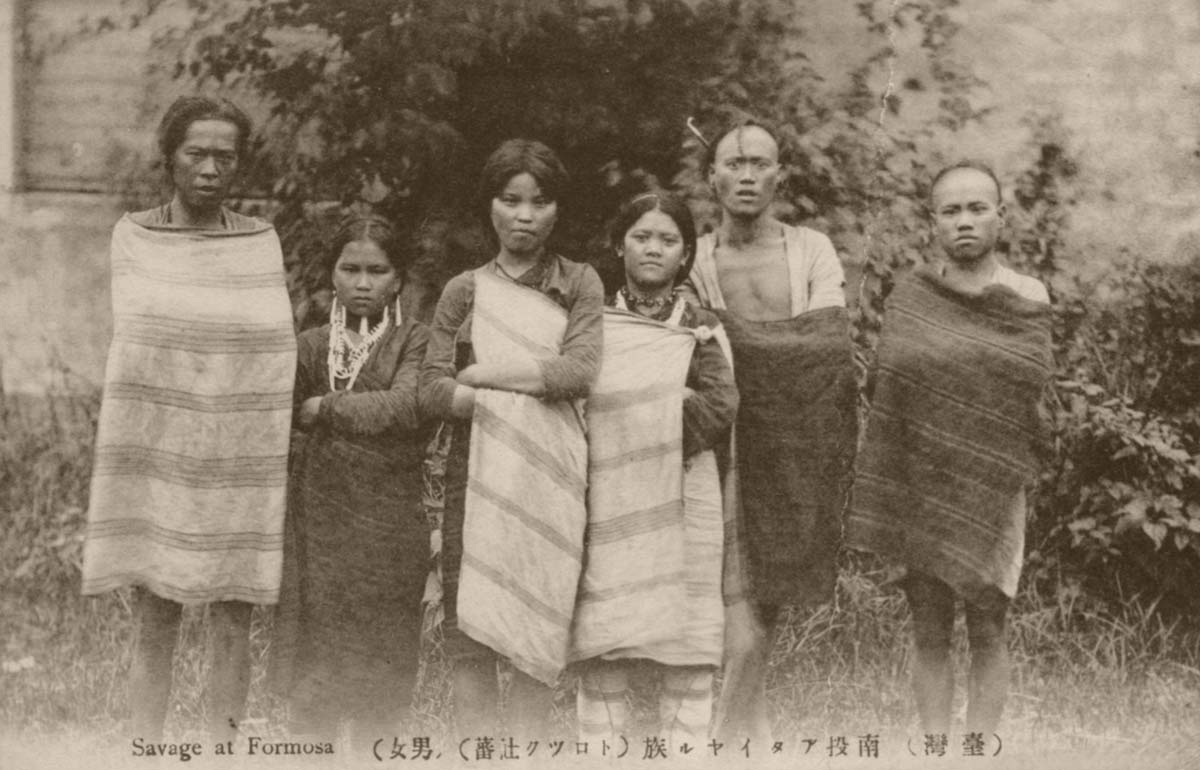
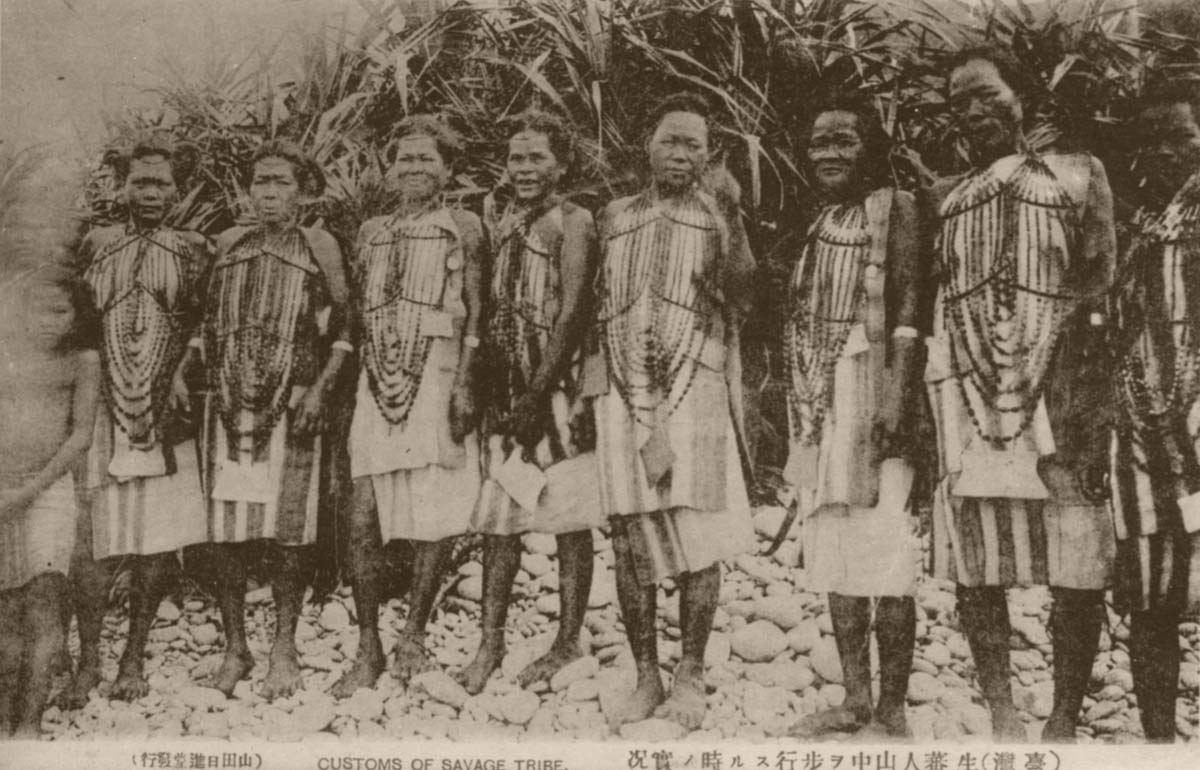
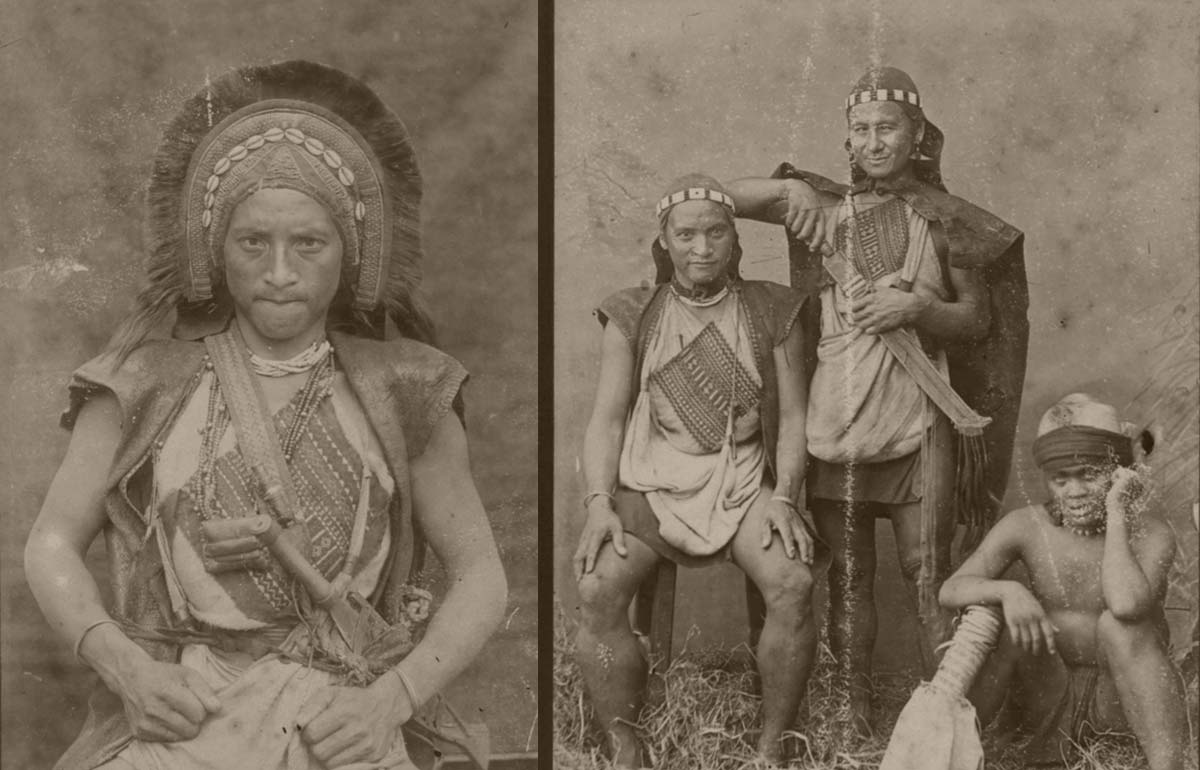
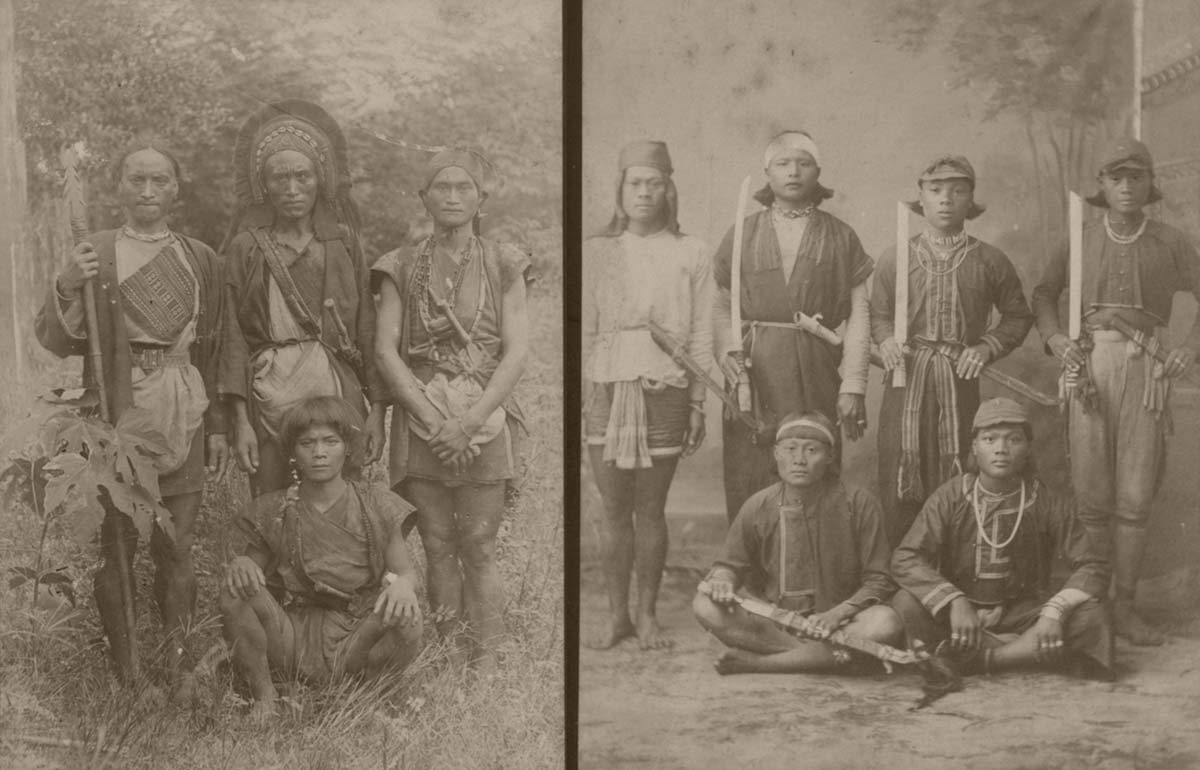
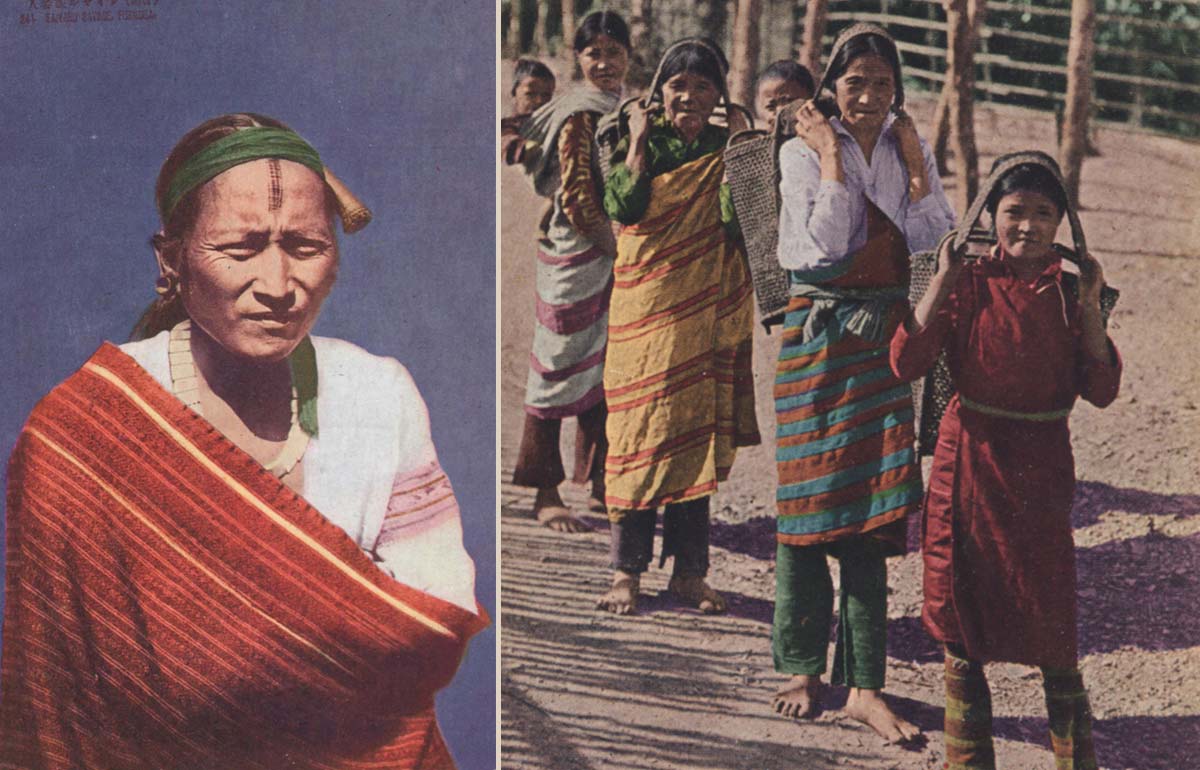
Taiwan’s original inhabitants are frequently known as Formosan Aborigines, a name derived from the island’s old name, Formosa. Theorists believe that they have lived there for at least 8,000 years.
During the last ice age, the sea separating the Asian mainland and nearby islands like Taiwan became very shallow and relatively easy to cross by small boats or perhaps even by walking across.
Ethnic Han from the Chinese mainland have colonized the island since the 17th Century, progressively displacing the indigenous population from the more desirable coast towards the more inaccessible highlands. That remoteness helped preserve culture, as well as a fierce reputation for headhunting. The Japanese took Formosa as a trophy of war from the Chinese in 1895 and held it as a colony until 1945.
All the textiles featured in this collection date to this pre-War period, with most coming out of old Japanese collections. Thankfully, there were Japanese artists and professors of the colonial period who recognized the importance of documenting the material culture of the indigenous tribes of Formosa as part of the Mingei Movement, a philosophy that evolved in the 1920s with the intent to preserve traditional handicraft, including weaving.
These garments are all exceptional examples, inclusive of a supremely important Lukkus-Pinotan Headhunter’s Costume from the Atayal tribe, featuring thousands of hand drilled shell disk beads; Paiwan jackets display ancestors dancing with trophy heads using heirloom beads; and some exceedingly rare Yami textiles with a simple appearance but upon closer examination show very complex woven structures.
Together this collection, sold only as a whole, convey visual information about the culture and lifeway of an ancient people who made very beautiful textiles.


